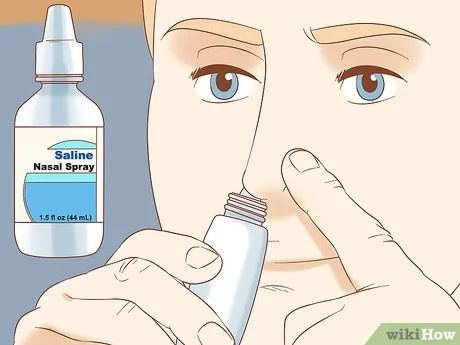Runny Nose
A runny nose is mucus being discharged out of the nose. It can be caused by colder outdoor temperatures, or by the cold, flu, or allergies(Dust, any allergy causing agents, even purfumes ,etc). Treatment includes drinking plenty of fluids, especially water, and resting as much as possible. You can ease symptoms with a saline nasal spray, and place a cool-mist humidifier near your bed to combat congestion aggravated by cold dry air.
What’s a runny nose?
A runny nose is mucus dripping or “running” out of your nose. It can be caused by colder outdoor temperatures, a cold, flu or allergies.
“Rhinorrhea,” a term often used alongside the phrase “runny nose,” is the thin, mostly clear discharge you might see. Another term you might often see is “Rhinitis.” Rhinitis is the inflammation of your nasal tissues.
When a cold virus or an allergen such as pollen or dust first enters your body, it irritates the lining of your nose and sinuses (or air-filled pockets around the face) and your nose starts to make a lot of clear mucus. This mucus traps bacteria, viruses or allergens and helps flush them out of your nose and sinuses.
After two or three days, the mucus may change color and become white or yellow. Sometimes the mucus may also turn a greenish color. All of this is normal and does not mean an infection is present.
A runny nose is mucus dripping or “running” out of your nose. It can be caused by colder outdoor temperatures, a cold, flu or allergies.
“Rhinorrhea,” a term often used alongside the phrase “runny nose,” is the thin, mostly clear discharge you might see. Another term you might often see is “Rhinitis.” Rhinitis is the inflammation of your nasal tissues.
When a cold virus or an allergen such as pollen or dust first enters your body, it irritates the lining of your nose and sinuses (or air-filled pockets around the face) and your nose starts to make a lot of clear mucus. This mucus traps bacteria, viruses or allergens and helps flush them out of your nose and sinuses.
After two or three days, the mucus may change color and become white or yellow. Sometimes the mucus may also turn a greenish color. All of this is normal and does not mean an infection is present.
How does your nose work to protect your body?
Your breathing process starts in your nose. Air gets into your lungs through your nose. It helps filter, humidify, warm or cool the air that comes through it so that the air that gets to your lungs is clean.
A special lining of mucosa, or a moist tissue, covers the area inside your nose and consists of many mucus-producing glands. As bacteria, allergens, dust or other harmful particles come into the nose, the mucus traps them. Mucus contains antibodies, or enzymes, which kill unwanted bacteria and viruses.
The mucosa lining also includes cilia, tiny hair-like structures. The cilia are continually in motion and move the collected harmful particles and the mucus that they are trapped in through your nose into the back of your throat. It’s then swallowed and destroyed by the acid in your stomach. Mucus and particles can also be coughed up or sneezed out.
When outdoor temperatures turn cold, the pace of this process slows down. Many times, the mucus stays in your nose and then drips or dribbles out.
Your breathing process starts in your nose. Air gets into your lungs through your nose. It helps filter, humidify, warm or cool the air that comes through it so that the air that gets to your lungs is clean.
A special lining of mucosa, or a moist tissue, covers the area inside your nose and consists of many mucus-producing glands. As bacteria, allergens, dust or other harmful particles come into the nose, the mucus traps them. Mucus contains antibodies, or enzymes, which kill unwanted bacteria and viruses.
The mucosa lining also includes cilia, tiny hair-like structures. The cilia are continually in motion and move the collected harmful particles and the mucus that they are trapped in through your nose into the back of your throat. It’s then swallowed and destroyed by the acid in your stomach. Mucus and particles can also be coughed up or sneezed out.
When outdoor temperatures turn cold, the pace of this process slows down. Many times, the mucus stays in your nose and then drips or dribbles out.
Why is mucus an important part of the airway system?
Mucus is needed to keep your airway moist and working properly. Not only does mucus stop harmful particles from getting into your lungs, but it also contains antibodies to help destroy bacteria. If too much mucus is produced, your body wants to get rid of it, leading to coughing and spitting the extra mucus out and blowing it out of your nose.
Mucus is needed to keep your airway moist and working properly. Not only does mucus stop harmful particles from getting into your lungs, but it also contains antibodies to help destroy bacteria. If too much mucus is produced, your body wants to get rid of it, leading to coughing and spitting the extra mucus out and blowing it out of your nose.

Comments
Post a Comment